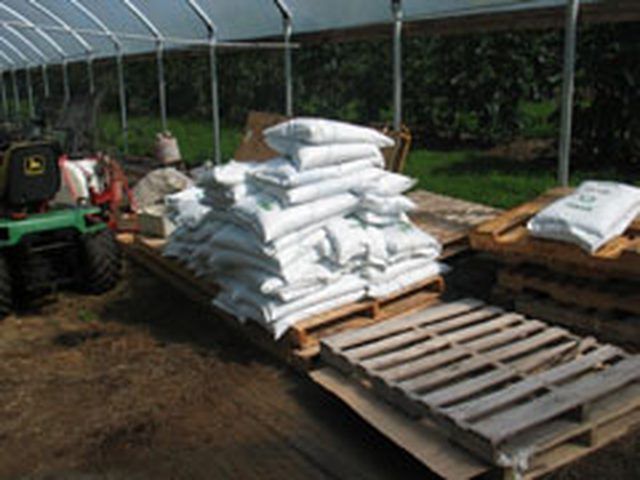Bulbs
Flower Basics
Flower Beds & Specialty Gardens
Flower Garden
Garden Furniture
Garden Gnomes
Garden Seeds
Garden Sheds
Garden Statues
Garden Tools & Supplies
Gardening Basics
Green & Organic
Groundcovers & Vines
Growing Annuals
Growing Basil
Growing Beans
Growing Berries
Growing Blueberries
Growing Cactus
Growing Corn
Growing Cotton
Growing Edibles
Growing Flowers
Growing Garlic
Growing Grapes
Growing Grass
Growing Herbs
Growing Jasmine
Growing Mint
Growing Mushrooms
Orchids
Growing Peanuts
Growing Perennials
Growing Plants
Growing Rosemary
Growing Roses
Growing Strawberries
Growing Sunflowers
Growing Thyme
Growing Tomatoes
Growing Tulips
Growing Vegetables
Herb Basics
Herb Garden
Indoor Growing
Landscaping Basics
Landscaping Patios
Landscaping Plants
Landscaping Shrubs
Landscaping Trees
Landscaping Walks & Pathways
Lawn Basics
Lawn Maintenance
Lawn Mowers
Lawn Ornaments
Lawn Planting
Lawn Tools
Outdoor Growing
Overall Landscape Planning
Pests, Weeds & Problems
Plant Basics
Rock Garden
Rose Garden
Shrubs
Soil
Specialty Gardens
Trees
Vegetable Garden
Yard Maintenance
The Effects of Fertilizer on Plant Growth
The Effects of Fertilizer on Plant Growth. Like people and other forms of animal life, plants need certain nutrients to grow and prosper. Both plants and animals must have oxygen, hydrogen and carbon, all of which can be derived from air and water. Other nutrients are not quite so omnipresent, but they are nevertheless important in the healthy...

Like people and other forms of animal life, plants need certain nutrients to grow and prosper. Both plants and animals must have oxygen, hydrogen and carbon, all of which can be derived from air and water. Other nutrients are not quite so omnipresent, but they are nevertheless important in the healthy growth and proper functioning of all living organisms.
Supplement for Plants
Just as vitamin and mineral supplements help humans get the optimal level of the nutrients they need, fertilizer performs a similar function for plants. Fertilizers---both inorganic and organic---offer varied combinations of nutrients designed especially for use with specific types of plants and in specific settings. Some nutrients are more important than others, but getting all of them helps to ensure that a plant grows as well as possible.
Essential Nutrients
After oxygen, hydrogen and carbon, the nutrients most critical to plant growth are the so-called primary macronutrients. These are nitrogen, phosphorus and potassium, which can be found in virtually every brand of fertilizer on the market. Secondary macronutrients include calcium, magnesium and sulfur, which are followed in importance by micronutrients. The latter include cobalt, iron, manganese, boron, copper, molybdenum and zinc.
How Plants Access Nutrients
Plants can absorb nutrients in a variety of ways, both through their roots and through portions of the plant that appear above ground. In most cases, fertilizer is mixed into the soil from which the plant will extract what it needs through its root system. However, for the convenience of gardeners and farmers, there are also fertilizers that can be dissolved in water and applied to the above-ground portion of the plant.
Why Fertilizers Are Needed
In the best of all possible worlds, the soil in which you plant that shrub or flowering bush would contain all the nutrients that the plant needs to survive. Of course, in the best of all possible worlds, there also would be sufficient rain to supply all the plant's needs. Sadly, you're not living in the best of all possible worlds. Many natural soils are deficient in certain nutrients that then must be supplied through fertilizers.
Deciphering Fertilizer's Numbers
All fertilizers on the market bear a three-number code, such as 5-10-5 or 10-20-10. That refers to the amount of nitrogen, phosphorus and potassium---the so-called primary macronutrients---contained in each fertilizer. The symbols for those chemical elements are N, P and K. A fertilizer that is labeled 10-20-10 would be 10 percent nitrogen, 20 percent phosphorus and 10 percent potassium. If you need help figuring out the levels of nutrients your plants need, take a soil sample to your local county agricultural extension service, which can do the job for a minimal fee. Alternatively, you can pick up a soil testing kit from your local gardening center and do the job yourself.